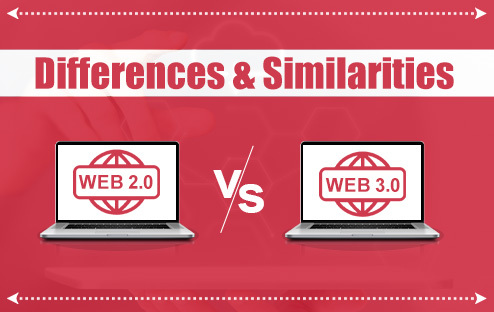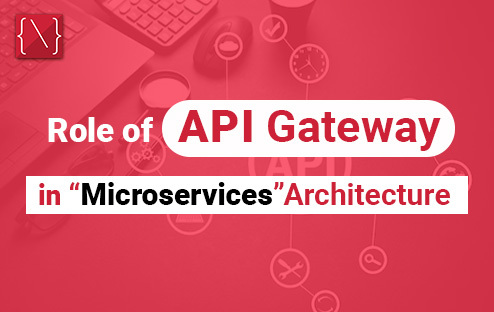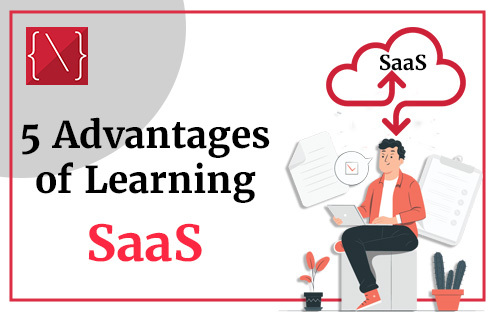
The internet has undeniably revolutionized the way we connect, consume information, and conduct business. Over the past few decades, we’ve witnessed a dramatic shift in how we interact with the web, transitioning from the static, one-way information exchange of Web 1.0 to the dynamic, user-centric environment of Web 2.0. Now, on the horizon, lies Web 3.0, promising a further evolution towards a decentralized, intelligent, and user-empowered web.
Understanding the core differences and similarities between these web iterations is crucial for navigating the ever-changing digital landscape.
Web 2.0: The Era of User Participation
Web 2.0 emerged in the early 2000s, representing a shift from static, one-way communication to dynamic, interactive platforms. At the heart of Web 2.0 were user-generated content, social media, and collaborative tools that empowered individuals to contribute, share, and connect on a global scale. Key features of Web 2.0 included:
Social Networking: Platforms like Facebook, Twitter, and LinkedIn redefined how people interacted online, enabling them to connect with friends, family, and communities in real-time.
User-Generated Content: Websites such as Wikipedia, YouTube, and blogging platforms empowered users to create and share content, democratizing the production and dissemination of information.
Collaborative Tools: Services like Google Docs, Dropbox, and GitHub revolutionized collaboration by allowing multiple users to work on documents, files, and projects simultaneously.
Personalization: Web 2.0 introduced personalized experiences through recommendation algorithms, targeted advertising, and tailored content delivery, enhancing user engagement and satisfaction.
Overall, Web 2.0 fostered a culture of participation, collaboration, and interactivity, laying the foundation for the social web as we know it today.
Web 3.0: The Era of Decentralization and Semantic Web
As we transition into the era of Web 3.0, we witness a paradigm shift driven by decentralization, interoperability, and semantic technologies. Web 3.0 represents a vision of the internet where data, services, and applications are decentralized, enabling greater autonomy, privacy, and security for users. Key characteristics of Web 3.0 include:
Decentralization: Distributed ledger technologies such as blockchain form the backbone of Web 3.0, enabling peer-to-peer transactions, smart contracts, and decentralized applications (DApps) that operate without intermediaries.
Interoperability: Web 3.0 aims to break down silos and create seamless connectivity between different platforms, protocols, and systems, fostering an ecosystem where data and services can freely interact and interoperate.
Semantic Web: Semantic technologies enhance the meaning and context of data on the internet, enabling machines to understand and process information more intelligently. This facilitates advanced search capabilities, personalized recommendations, and context-aware services.
Privacy and Security: Web 3.0 prioritizes user privacy and security through encryption, self-sovereign identity, and decentralized authentication mechanisms, empowering individuals to control their digital identities and data.
Web 3.0 represents a shift towards a more transparent, inclusive, and secure internet, where users have greater control over their online interactions and data.
Differences and Similarities
While Web 2.0 and Web 3.0 represent distinct phases in the evolution of the internet, they also share some commonalities and overlapping themes:
User Empowerment: Both Web 2.0 and Web 3.0 emphasize empowering users to create, share, and interact with content and services online, albeit through different mechanisms.
Technological Innovation: Both phases are characterized by significant technological innovations that reshape how we use and perceive the internet, whether through social media platforms in Web 2.0 or blockchain and decentralized applications in Web 3.0.
Focus on Collaboration: Collaboration remains a central theme in both Web 2.0 and Web 3.0, albeit with different emphases. Web 2.0 focuses on collaborative content creation and sharing, while Web 3.0 emphasizes decentralized collaboration and interoperability.
Impact on Society: Both Web 2.0 and Web 3.0 have profound implications for society, influencing how we communicate, collaborate, conduct business, and navigate the digital world. From social networking to decentralized finance, these paradigms shape our online experiences and interactions.
In conclusion, the transition from Web 2.0 to Web 3.0 represents a significant evolution in the internet’s capabilities, from user-generated content and social networking to decentralization and semantic technologies. While each phase brings its own set of characteristics and implications, they are interconnected in their quest to empower users, foster collaboration, and advance the capabilities of the internet. By understanding the differences and similarities between Web 2.0 and Web 3.0, we can better appreciate the ongoing evolution of the internet and its transformative potential in shaping the future of digital society.
ALSO READ: Digital marketing and Ecommerce- How are they related to each other?

In recent years, Microservices Architecture (MSA) has become one of the most popular software architectures for developing and deploying large-scale applications. However, as applications become more complex and composed of numerous microservices, the need for effective communication and management arises. This is where the API Gateway steps in as a critical component, streamlining the complexities associated with Microservices Architecture.
Understanding Microservices Architecture:–
In the context of software development, Microservices Architecture is a paradigm that breaks down large applications into smaller, independent services. Each service operates autonomously and communicates with others through well-defined Application Programming Interfaces (APIs).
Challenges in Microservices Communication:–
The advantages of Microservices Architecture are substantial, but they come with their set of challenges:
- Service Discovery: Microservices must dynamically find and communicate with each other, necessitating a robust service discovery mechanism.
- Load Balancing: Distributing incoming requests evenly among multiple instances of a service is crucial for optimal performance and resource utilization.
- Security: Ensuring secure communication and enforcing access controls between services is a complex task in a microservices environment.
- Request Routing: Determining how to route client requests to the appropriate microservice instance becomes increasingly complex with a growing number of services.
The Role of API Gateway:–
The API Gateway plays a important role in addressing these challenges and ensuring the efficient functioning of Microservices Architecture:
- Unified Entry Point:
- Serving as a centralized entry point, the API Gateway simplifies external client interaction by providing a single interface to communicate with the microservices.
- Request Routing and Load Balancing:
- API Gateways excel in routing incoming requests to the appropriate microservices and implementing load balancing for optimal performance.
- Service Discovery:
- Integration with service discovery mechanisms enables API Gateways to dynamically locate and manage communication between microservices.
- Security and Authentication:
- By implementing robust security measures, API Gateways ensure a standardized approach to authentication and authorization across all microservices.
- Traffic Management:
- API Gateways allow for precise traffic control, enabling developers to manage the flow of requests and prioritize critical services.
- Logging and Monitoring:
- Centralized logging and monitoring capabilities of API Gateways provide valuable insights into the health and performance of microservices.
- Protocol Translation:
- Handling protocol translation, API Gateways ensure seamless communication between microservices using different protocols.
In summary, API Gateways are essential for organizations using Microservices Architecture. They make communication simpler, improve security, and provide a single entry point for external clients. Knowing and using the features of API Gateways helps developers create strong, reliable, and secure applications in a Microservices environment.
ALSO READ:- Role of UX Design in eCommerce Website Development

In today’s rapidly evolving technology landscape, “Software as a Service” (SAAS) has emerged as a game-changer, transforming the way businesses and individuals access, use, and manage software applications. Learning SaaS, whether you’re a seasoned IT professional or a curious newcomer, offers a plethora of advantages that can enhance your career prospects and personal growth. In this blog post, we’ll explore five compelling advantages of learning SaaS and why it’s a skill worth acquiring.
Accessibility and Convenience
One of the most significant advantages of SaaS is its accessibility and convenience. Unlike traditional software that requires installation and maintenance on individual devices, SaaS applications are hosted in the cloud. This means you can access them from anywhere with an internet connection and on any device. Learning how to use SaaS applications effectively empowers you to work, collaborate, and stay productive while on the go, whether you’re at home, in the office, or on vacation.
Cost-Efficiency
SaaS offers a cost-effective alternative to traditional software licensing. With SaaS, you typically pay a subscription fee, which covers software updates, maintenance, and customer support. This eliminates the need for costly upfront investments in software licenses, hardware, and IT infrastructure. By mastering SaaS tools, you can help your organization reduce its software-related expenses and allocate resources more efficiently.
ALSO READ: Pros and Cons of Using Windows Hosting in 2023
Scalability
The scalability of SaaS is another significant advantage. Whether you’re a small business looking to grow or a large corporation with fluctuating software needs, SaaS applications can easily adapt to your requirements. You can increase or decrease the number of user licenses, storage capacity, or other resources as your needs change. Learning SaaS allows you to harness the full potential of this scalability, ensuring your software resources align with your business demands.
Automatic Updates and Maintenance
SaaS applications are known for their seamless and automatic updates. With traditional software, you often have to manually download and install updates, which can be time-consuming and sometimes disruptive. SaaS providers handle updates and maintenance in the background, ensuring that you always have access to the latest features, improvements, and security patches. Learning how to manage SaaS applications helps you stay current with technology and safeguards your data and systems.
Collaboration and Integration
Collaboration is at the core of many SaaS applications. Learning how to use tools like Google Workspace, Microsoft 365, or Slack can significantly enhance your ability to work with colleagues and clients. SaaS applications also tend to integrate with other software, offering a seamless ecosystem for your workflow. By mastering SaaS, you can streamline your work processes, share documents more efficiently, and facilitate better communication with your team.
Conclusion
Learning SaaS is not just a skill; it’s an investment in your future. Its accessibility, cost-efficiency, scalability, automatic updates, and collaborative features make it a valuable asset for both individuals and businesses. As the technology landscape continues to evolve, proficiency in SaaS applications becomes increasingly essential for staying competitive and efficient. So, whether you’re an entrepreneur looking to streamline your operations or an IT professional aiming to expand your skill set, diving into the world of SaaS is a smart move. Embrace the advantages of SaaS, and you’ll find yourself well-equipped for the challenges of the modern digital age.
ALSO READ: Why Should You Invest in Laravel Development?

 AJ 14, Salt Lake, Sector 2, Kolkata - 700091 |
AJ 14, Salt Lake, Sector 2, Kolkata - 700091 |  743 Virginia Ave NE Atlanta, GA 30306
743 Virginia Ave NE Atlanta, GA 30306



